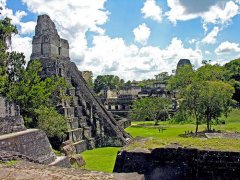Boutique coffee beans Hawaiian Kona / Kona Coffee (Hawaii Kona)
Hawaii, a beautiful tropical Pacific island, not only produces beautiful scenery, but also produces the famous Kona coffee. Kona is also named after origin and can be sold under the trademark Kona only on the southwest coast of Hawaii, 20 miles long and 2 miles wide, 150m to 750m above sea level, covering the slopes of Hualalai and Mauna Loa volcanoes.

Kona coffee, Arabica, beautiful appearance, average neat bean shape, clear taste, medium mellow, slightly sour taste, strong aroma and long aftertaste. Kona coffee is divided into four grades, namely Extra Fancy, Fancy, Prime and Gr.No.1. Due to low production and high production costs, in the case of increasing demand for boutique coffee, the price of Kona on the market is catching up with the Blue Mountain of Jamaica, and the best Kona beans are becoming more and more difficult to buy.
The excellent quality of Kona coffee benefits from the suitable geographical location and climate. Coffee trees grow on the slopes of volcanoes and the volcanic ash soil is fertile. The climate is suitable, the sun in the morning gently passes through the air full of water vapor, in the afternoon, the mountains will become more humid and foggy, the white clouds surging in the air are natural umbrellas for coffee trees, and the evening will become sunny and cool, but there is no Frosts Descent. Because of the suitable natural conditions, the average yield of Kona coffee is very high, reaching 2240 kg per hectare, while in Latin America, the yield of coffee per hectare is only 600kg ~ 900kg.
The raw beans of Kona coffee are usually small packaged coffee beans. Kona coffee is also often used to make blended coffee along with other coffee beans. Kona beans mixed with other beans will be marked with "KonaBlend" on the package. Unfortunately, the content of Kona beans in this mixed bean may be very low, and the minimum content of Kona beans in Hawaii that can use the "Kona" label is only 10%.
Kona coffee beans produced in Hawaii are the most beautiful coffee beans in the world. they are extremely full and shiny. Kona coffee beans are evenly shaped, have a strong sour and sweet taste, and taste wet and smooth. Because of the growing volcano, Hawaii's unique volcanic climate casts the unique aroma of Kona coffee and high-density artificial farming, so each bean can be said to be a spoiled "lady". Logo, plump and baby-like skin.
Kona Coffee is fresh, crisp, medium-bodied, slightly sour and full-bodied, with a long finish. The most rare thing is that Kona coffee has a mixed aroma of wine, fruit and spices, which is as charming as the colorful colors of this volcanic archipelago, so that some people think that this gentleness is synonymous with mediocrity. I think Kona is too refreshing and too simple. But if you are the kind of person who must slowly get into the state with the aroma of coffee before tasting it, Kona is the right coffee for you. Because he is not as mellow as Indonesian coffee, not as full-bodied as African coffee, let alone as rugged as Central and South American coffee, Kona coffee is like a girl in the Hawaiian sun breeze, fresh and natural, lukewarm.
Important Notice :
前街咖啡 FrontStreet Coffee has moved to new addredd:
FrontStreet Coffee Address: 315,Donghua East Road,GuangZhou
Tel:020 38364473
- Prev

Is it good or bad in coffee beans?
Peaberry or caracoli is a variety of coffee beans. In fact, male beans are a defect, officially speaking, coffee beans that cannot develop normally. The causes are usually insect damage, drought, or malnutrition of coffee trees. Under normal circumstances, the fruit of the coffee tree contains two coffee beans, each of which is flat and hemispherical.
- Next

Common sense of Coffee characteristics of Coffee in eight producing areas of Guatemala
The Ekatra Valley rises to 2000 meters (6500 feet), with dense shade and unique ecology, and the nearby Fuego volcano erupts, making its coarse, sandy soil rich in a variety of minerals. Temperate sea breezes from the Pacific and a seasonal climate allow coffee in this region to be dried by sunlight and processed according to traditional family methods that have been accumulated over the years. [characteristics]
Related
- Detailed explanation of Jadeite planting Land in Panamanian Jadeite Manor introduction to the grading system of Jadeite competitive bidding, Red bid, Green bid and Rose Summer
- Story of Coffee planting in Brenka region of Costa Rica Stonehenge Manor anaerobic heavy honey treatment of flavor mouth
- What's on the barrel of Blue Mountain Coffee beans?
- Can American coffee also pull flowers? How to use hot American style to pull out a good-looking pattern?
- Can you make a cold extract with coffee beans? What is the right proportion for cold-extracted coffee formula?
- Indonesian PWN Gold Mandrine Coffee Origin Features Flavor How to Chong? Mandolin coffee is American.
- A brief introduction to the flavor characteristics of Brazilian yellow bourbon coffee beans
- What is the effect of different water quality on the flavor of cold-extracted coffee? What kind of water is best for brewing coffee?
- Why do you think of Rose Summer whenever you mention Panamanian coffee?
- Introduction to the characteristics of authentic blue mountain coffee bean producing areas? What is the CIB Coffee Authority in Jamaica?

